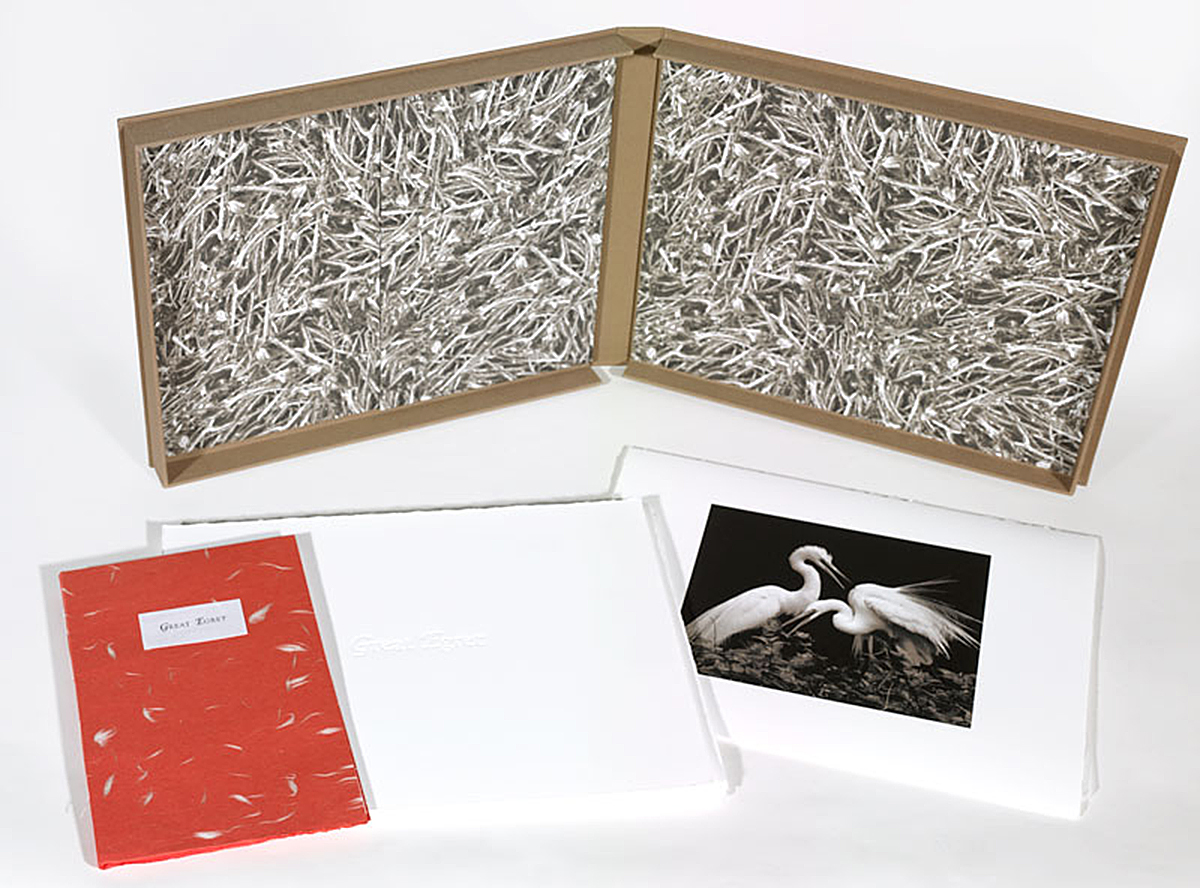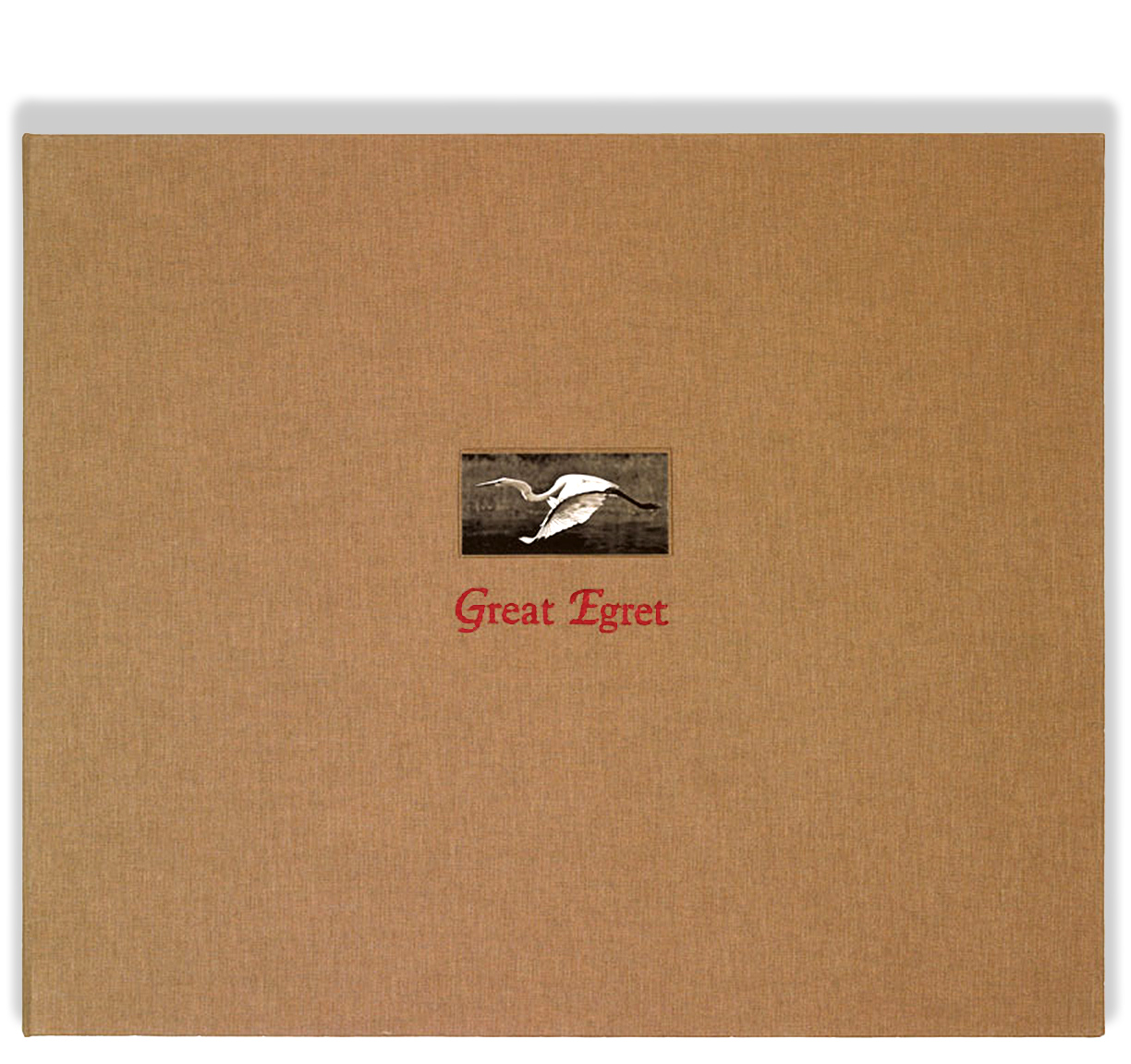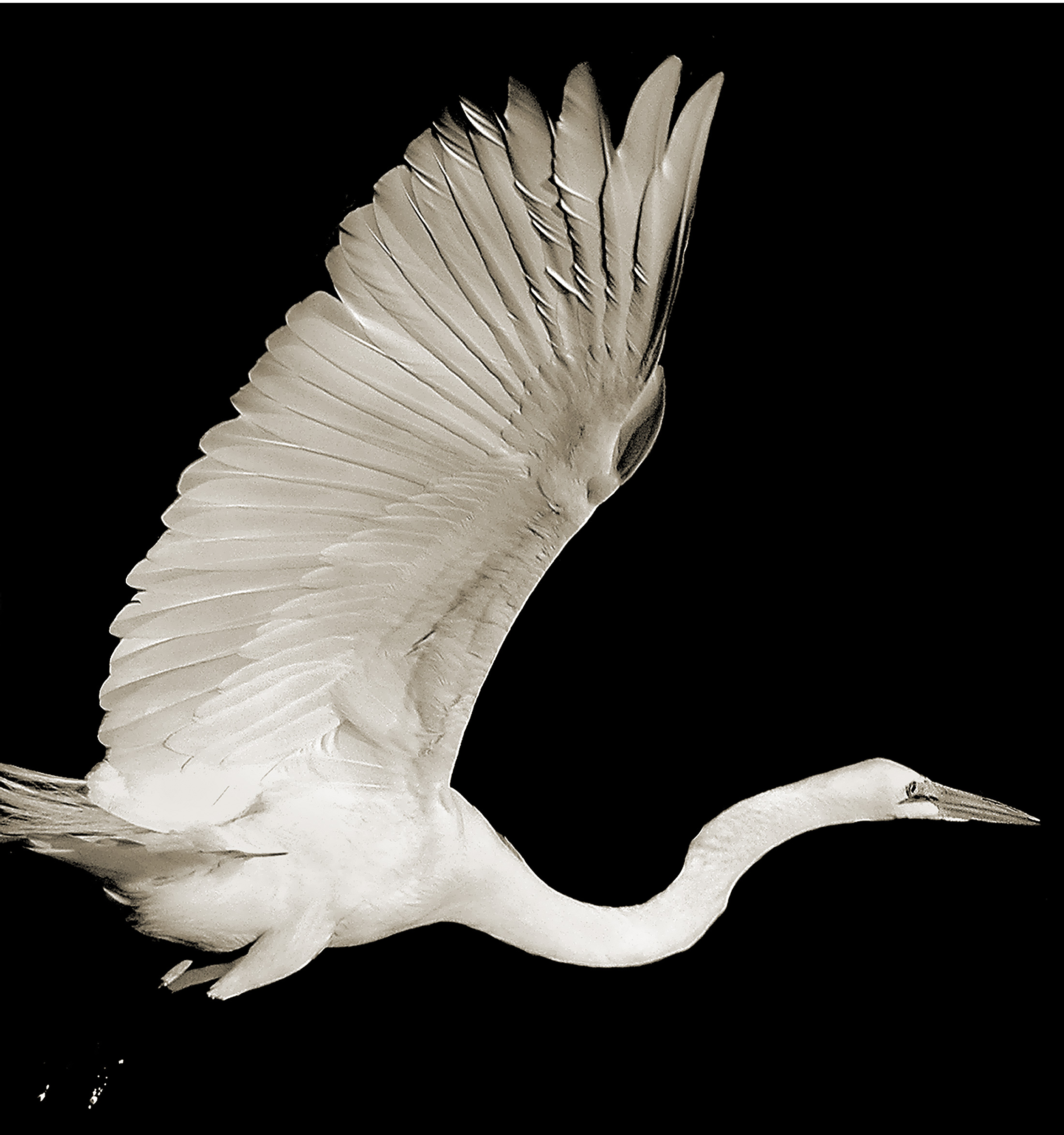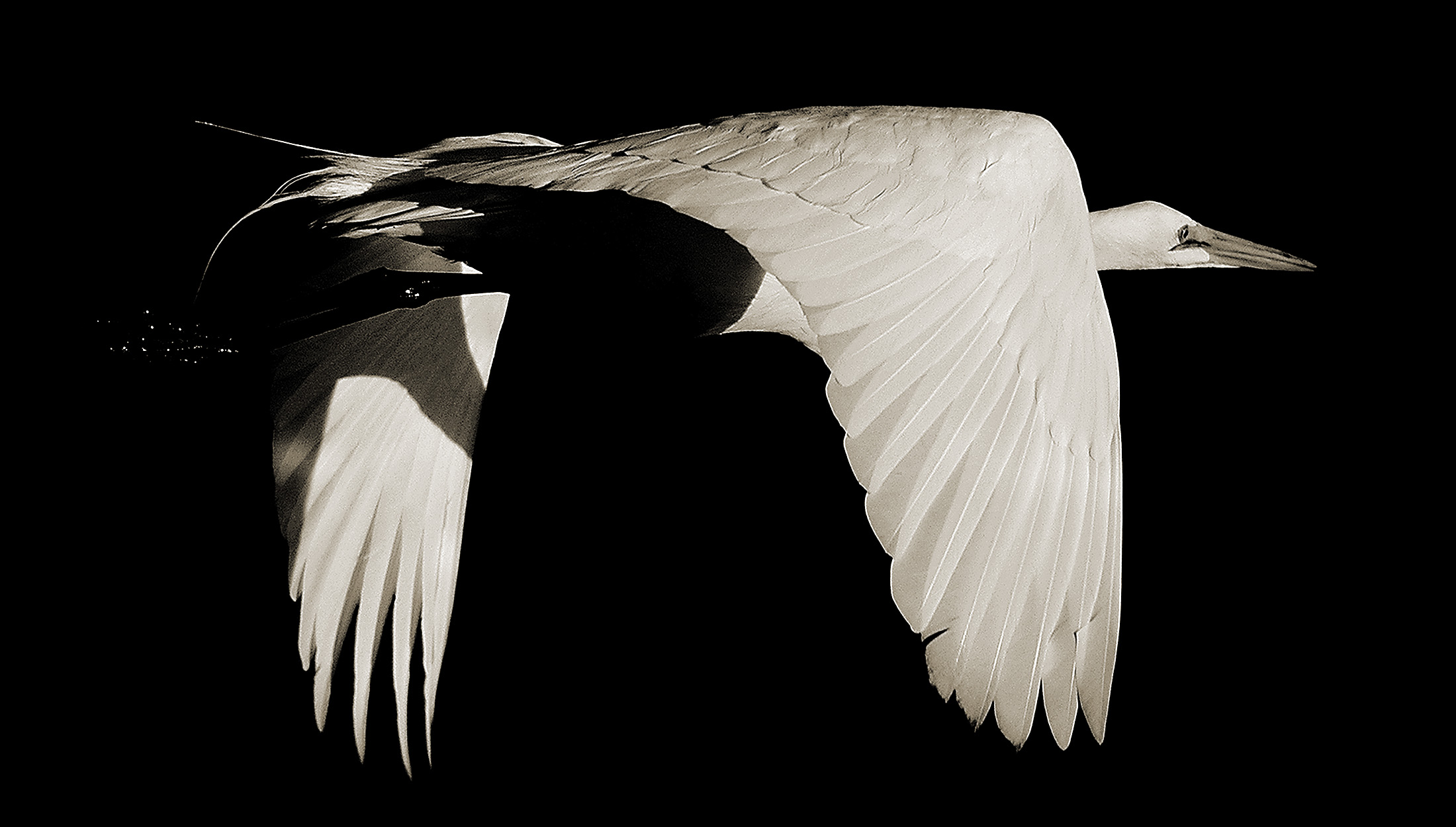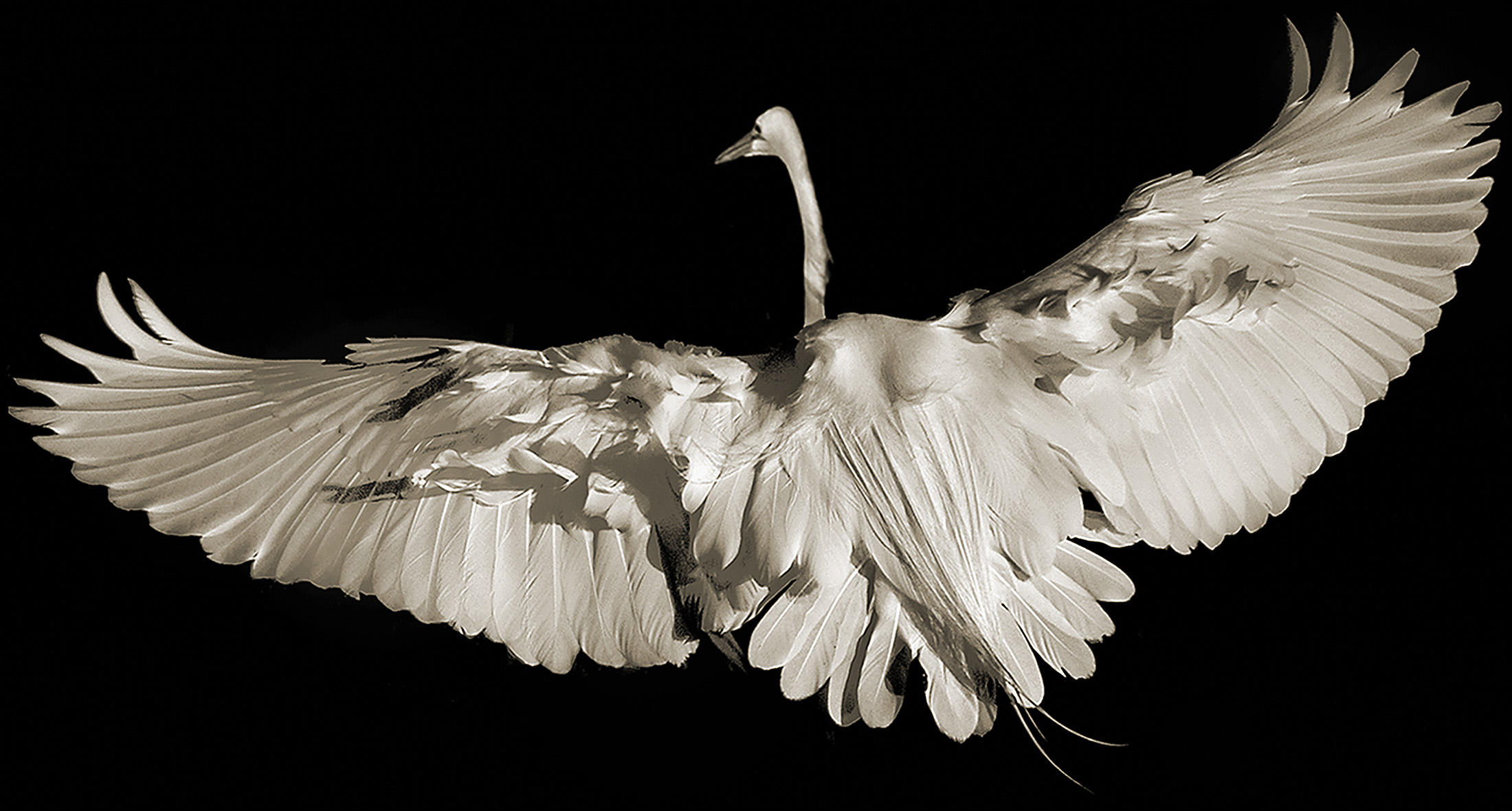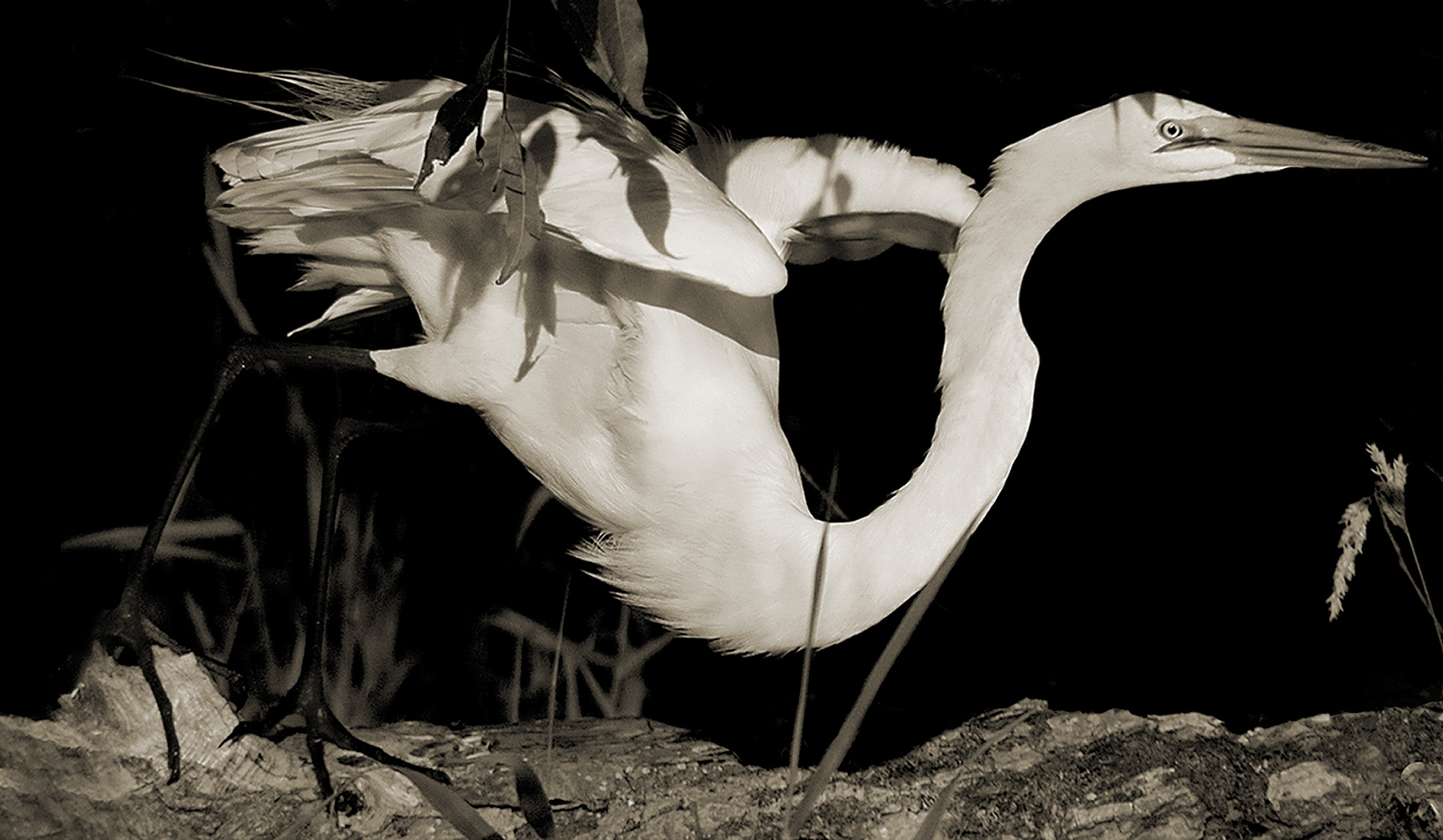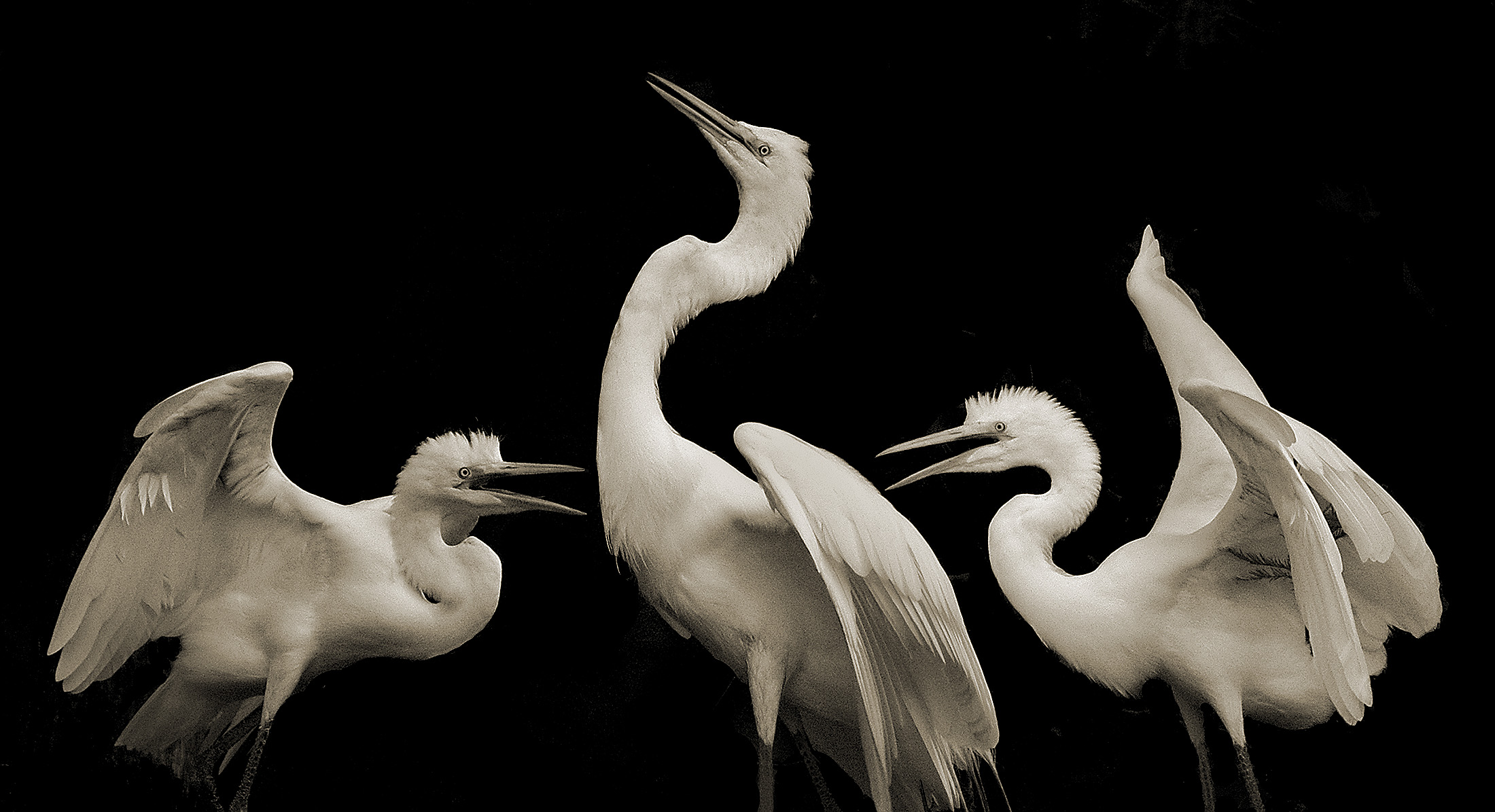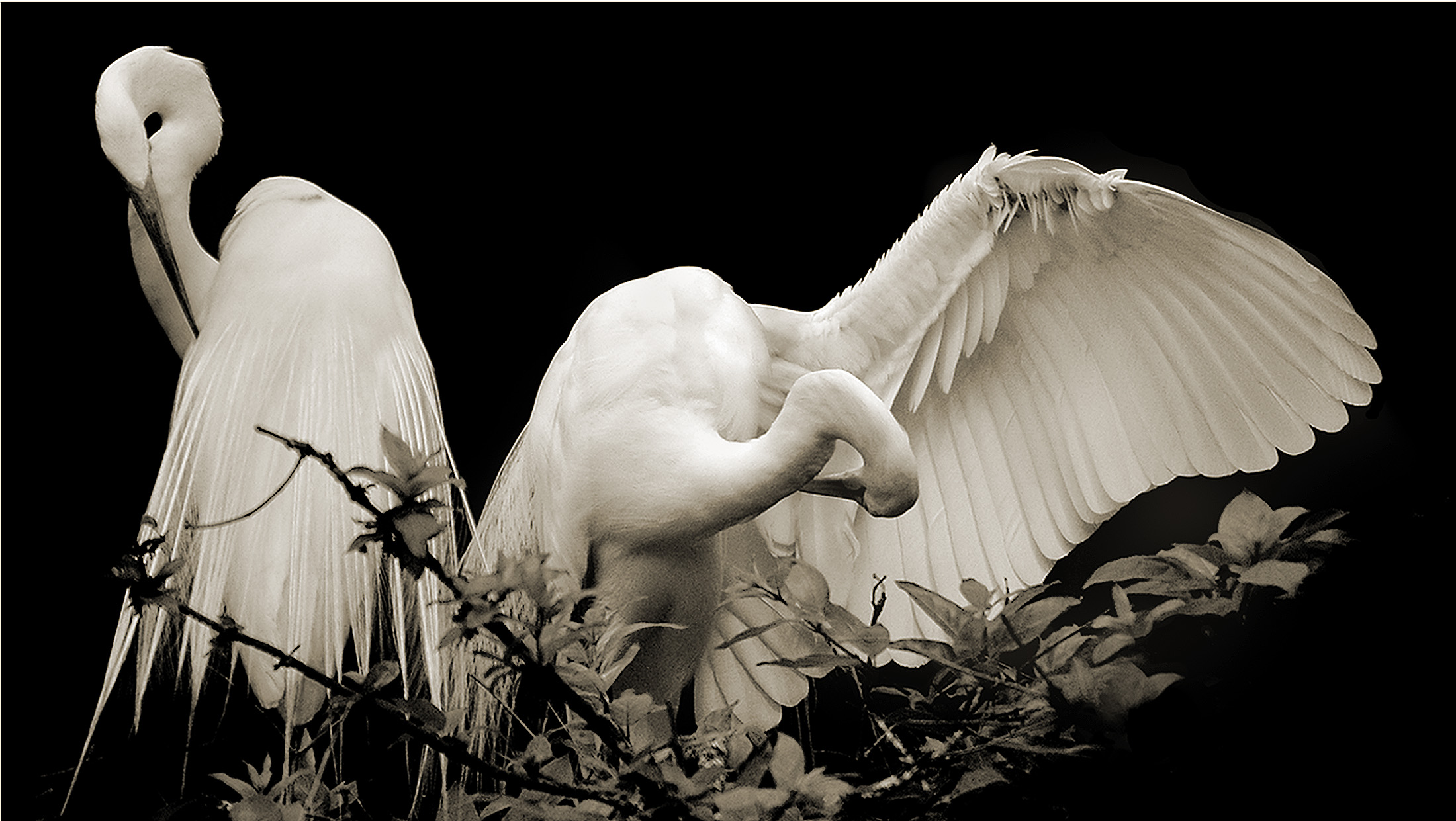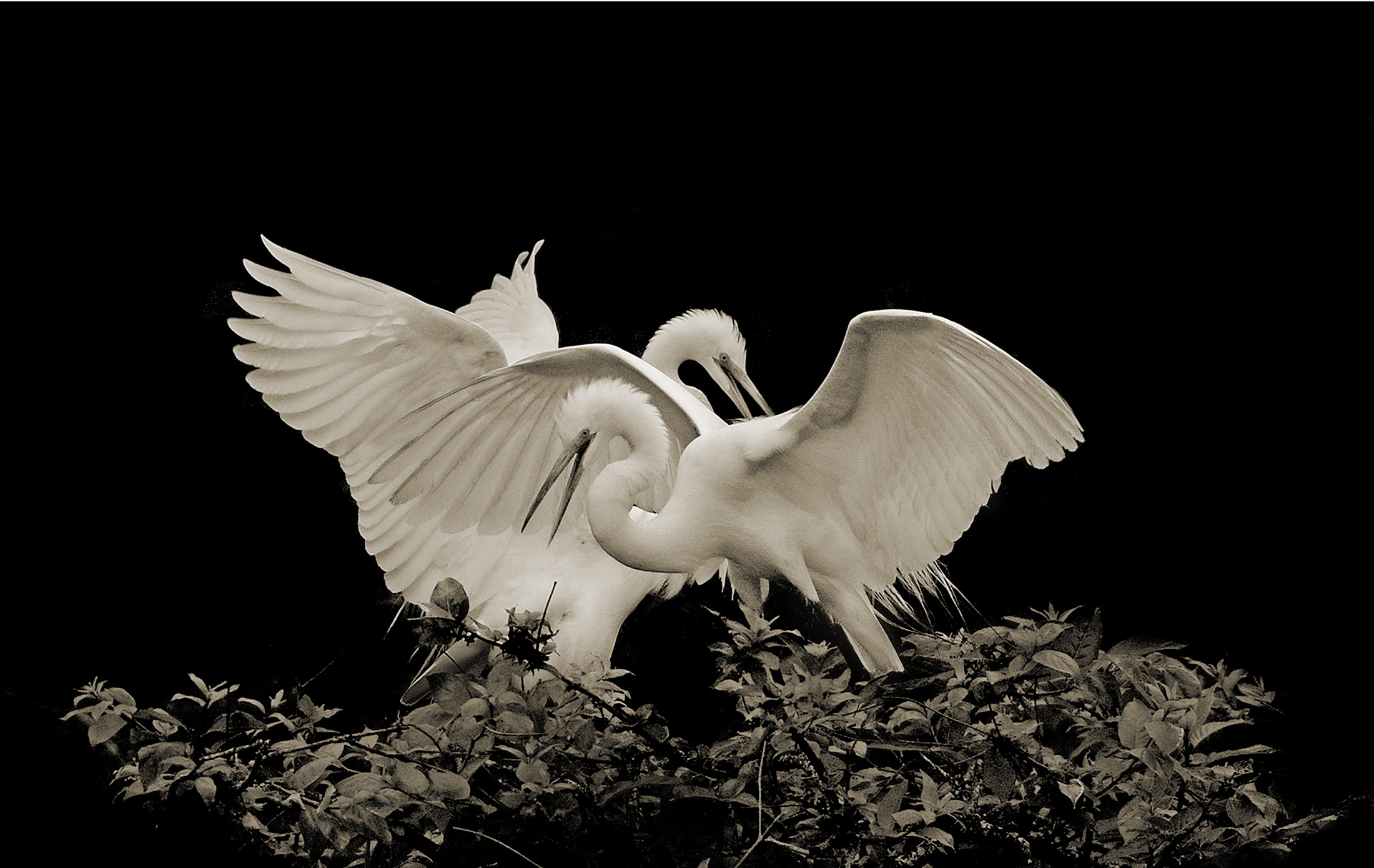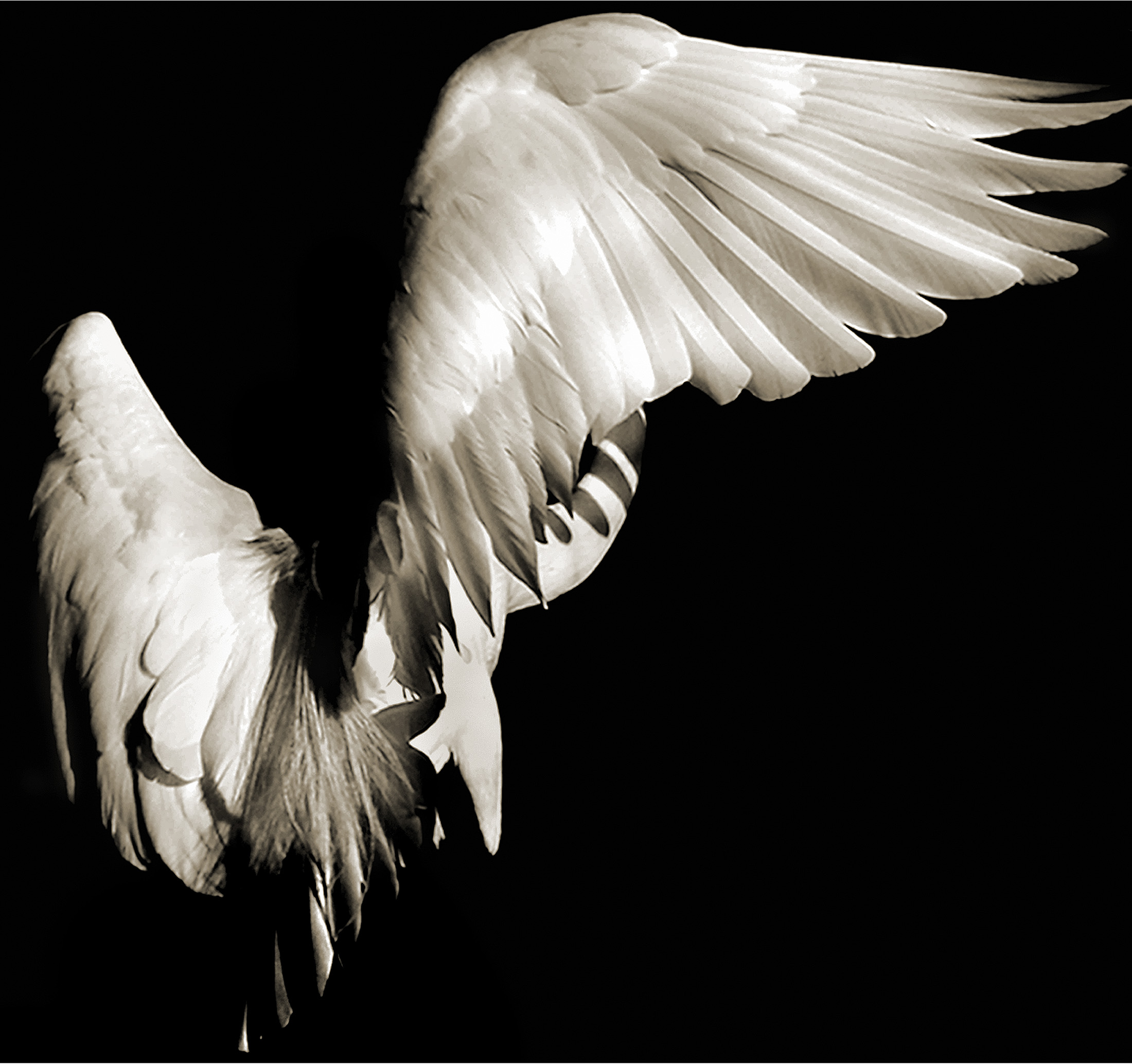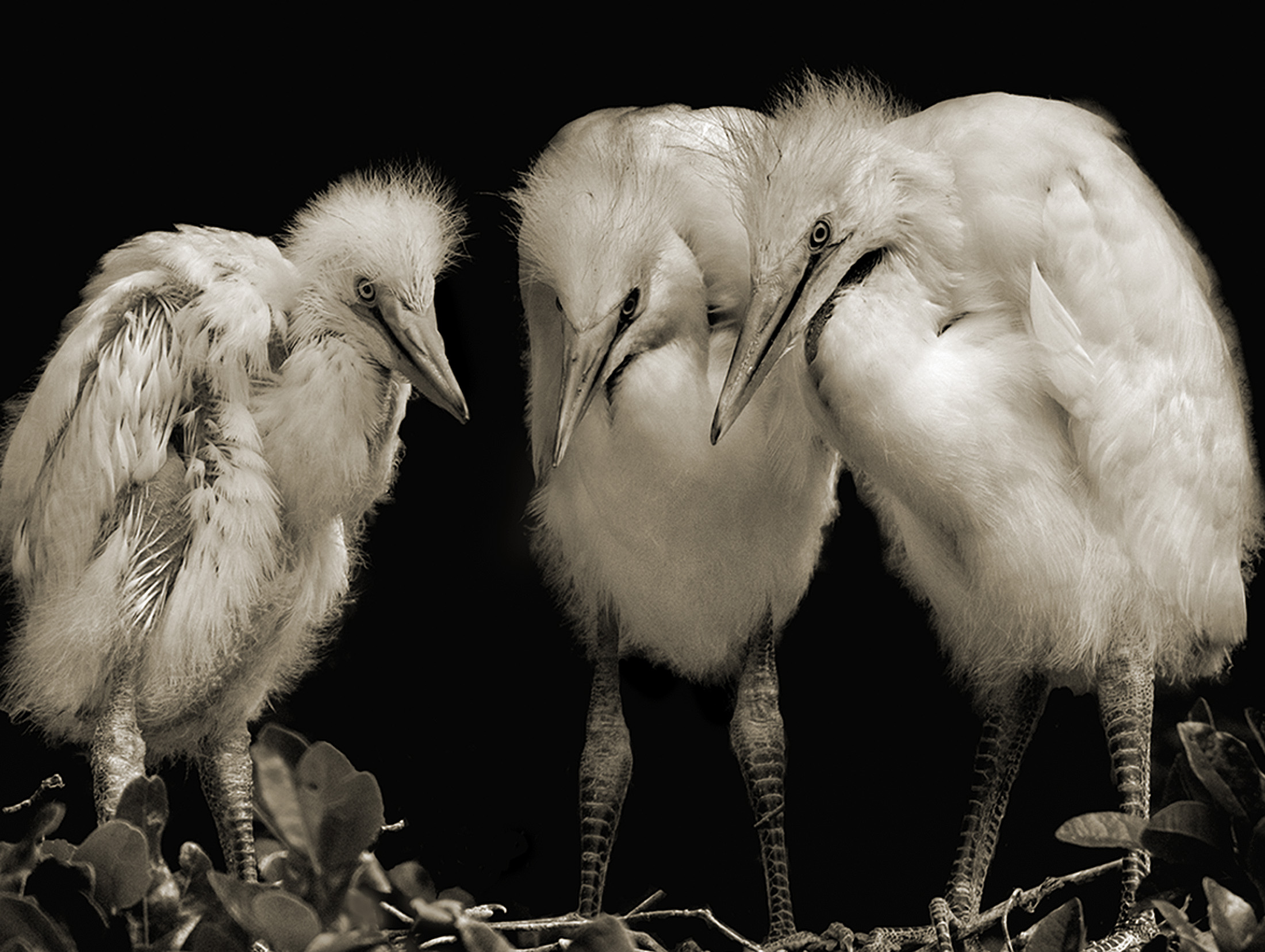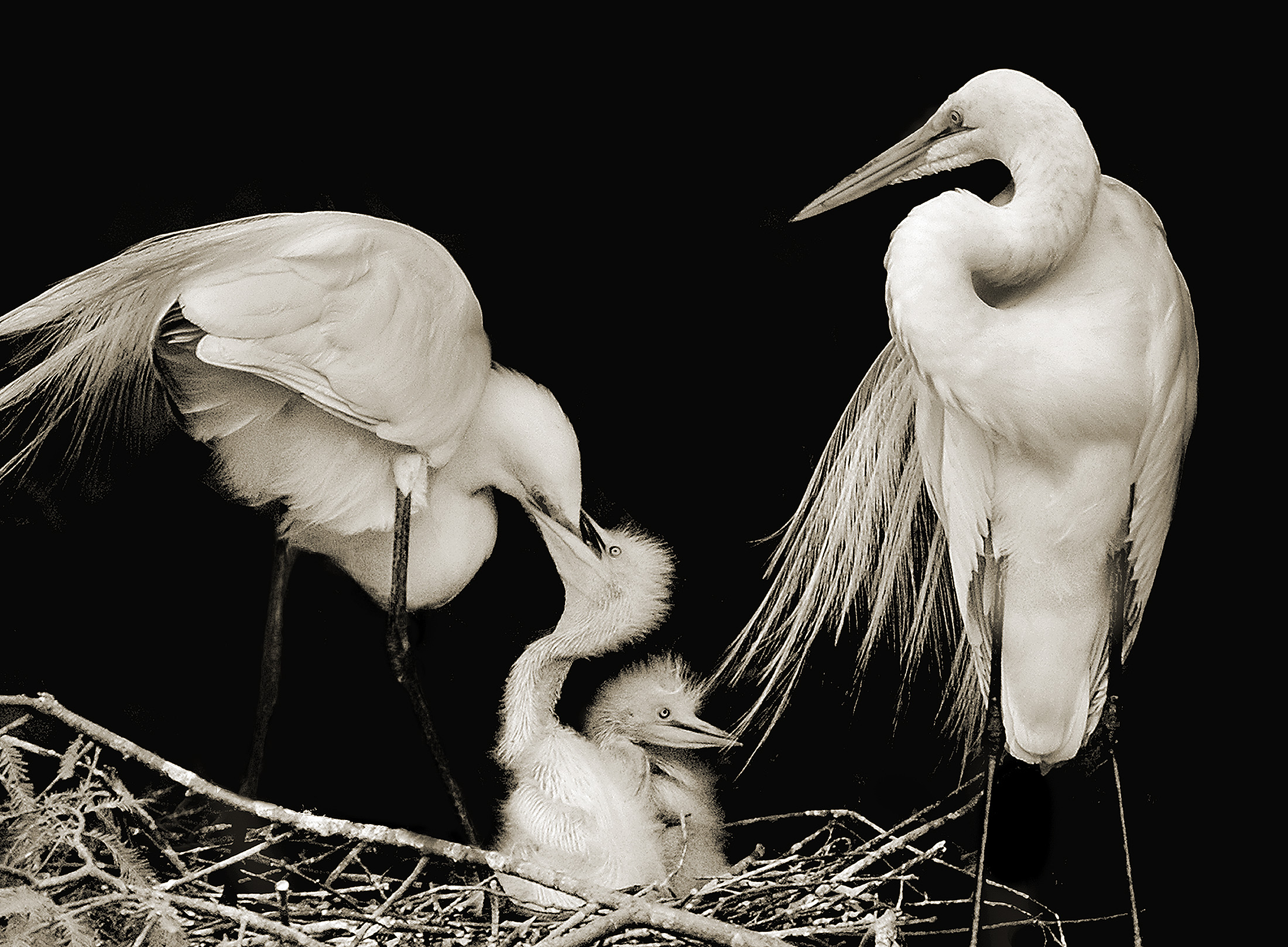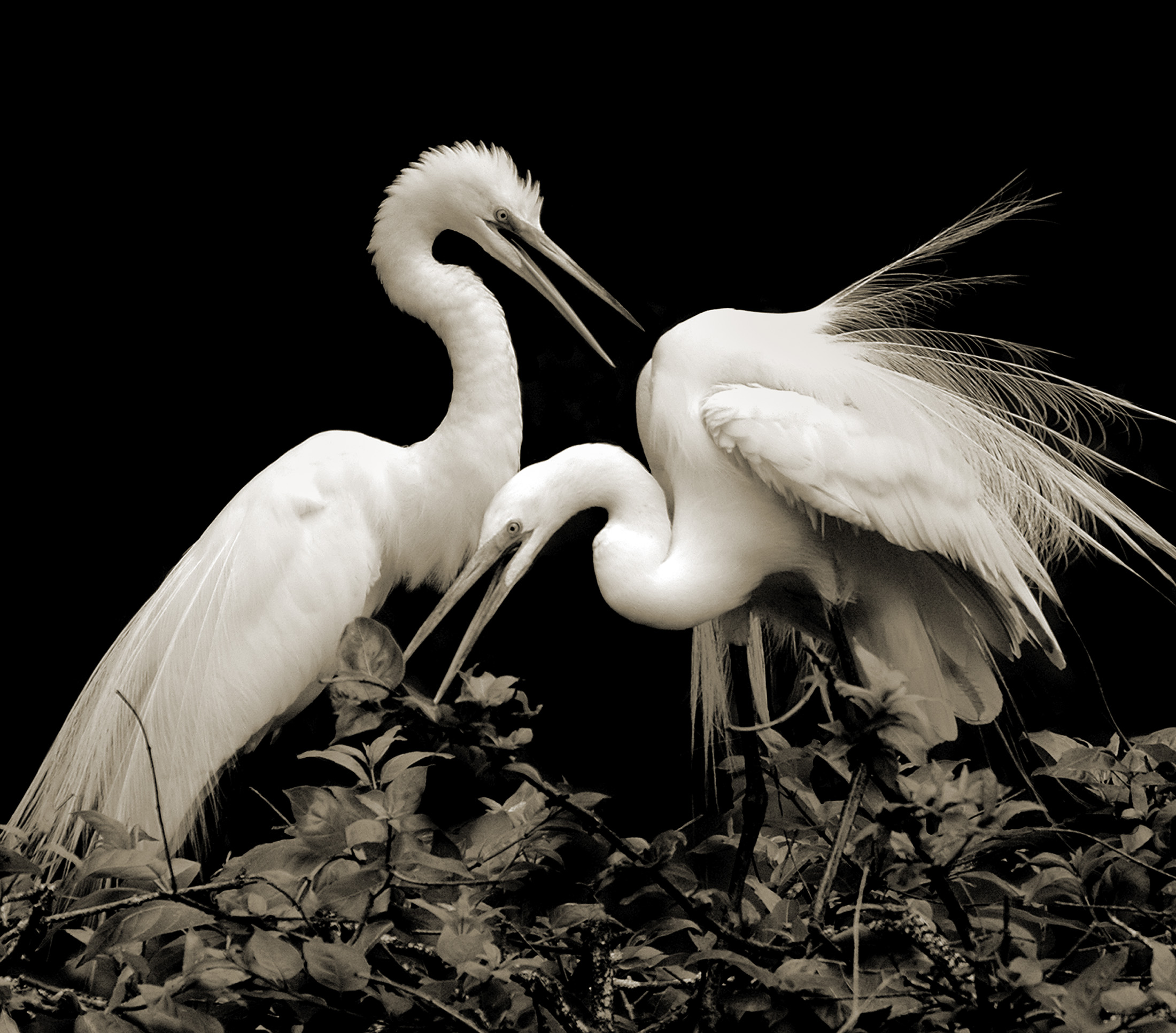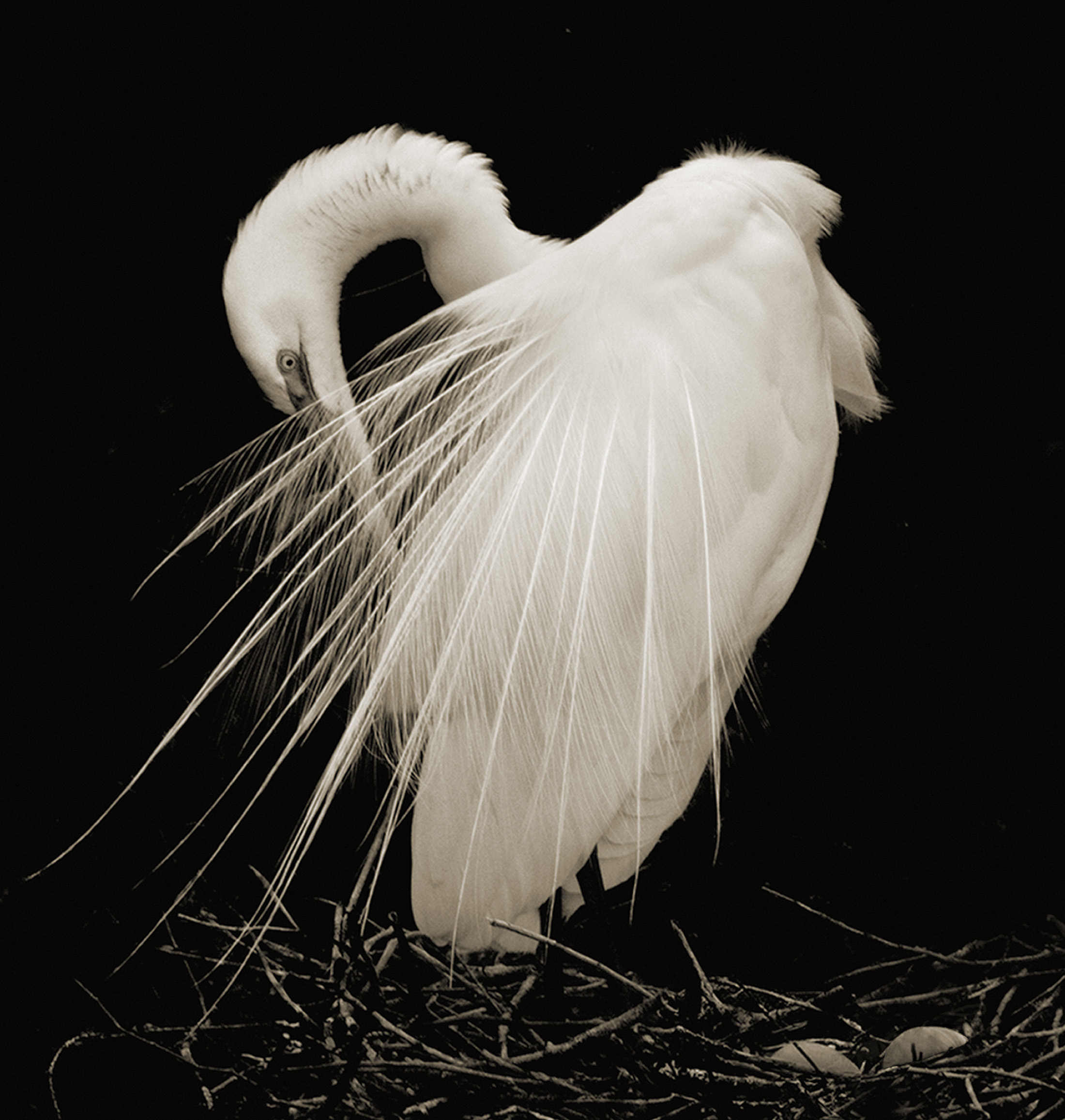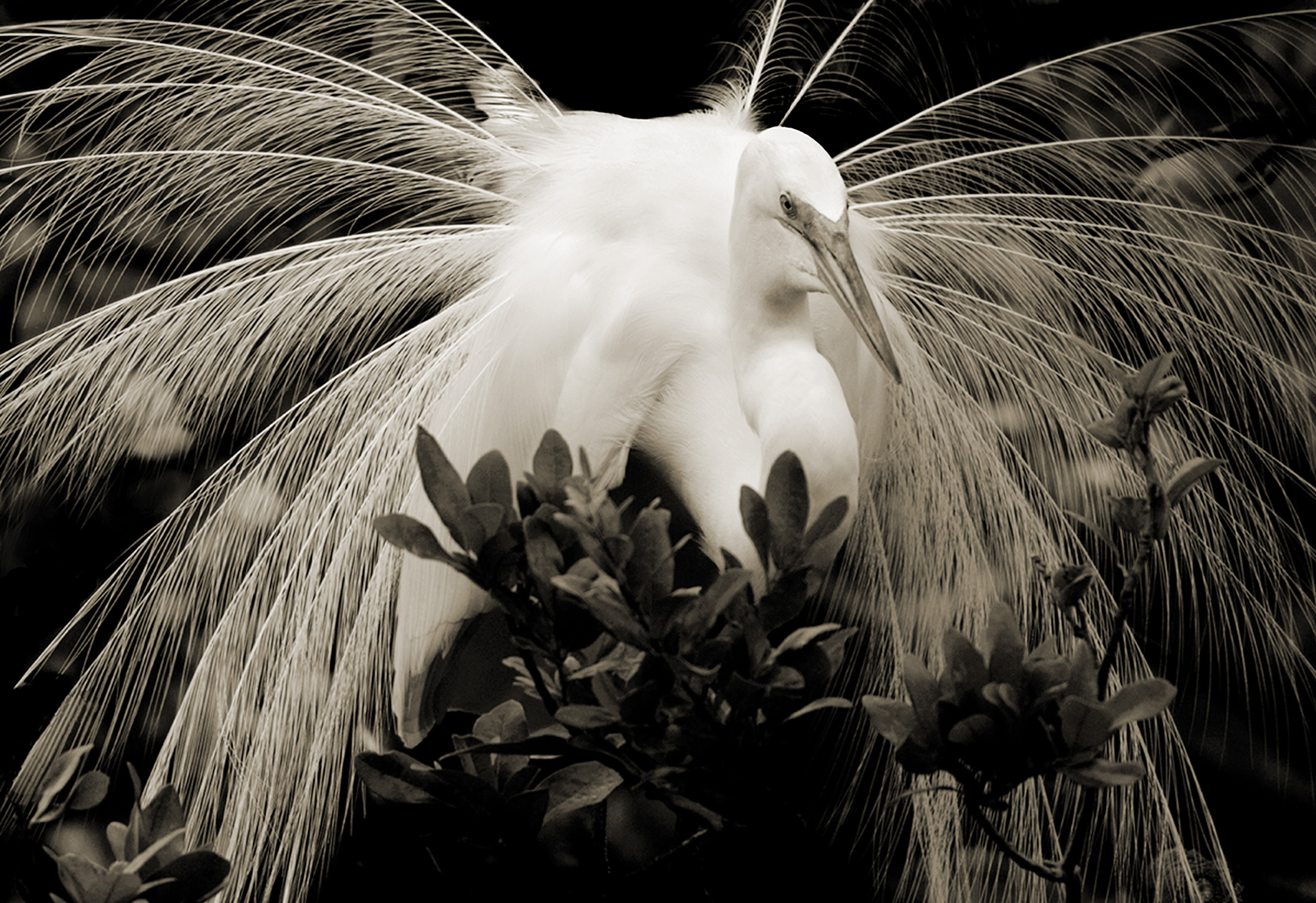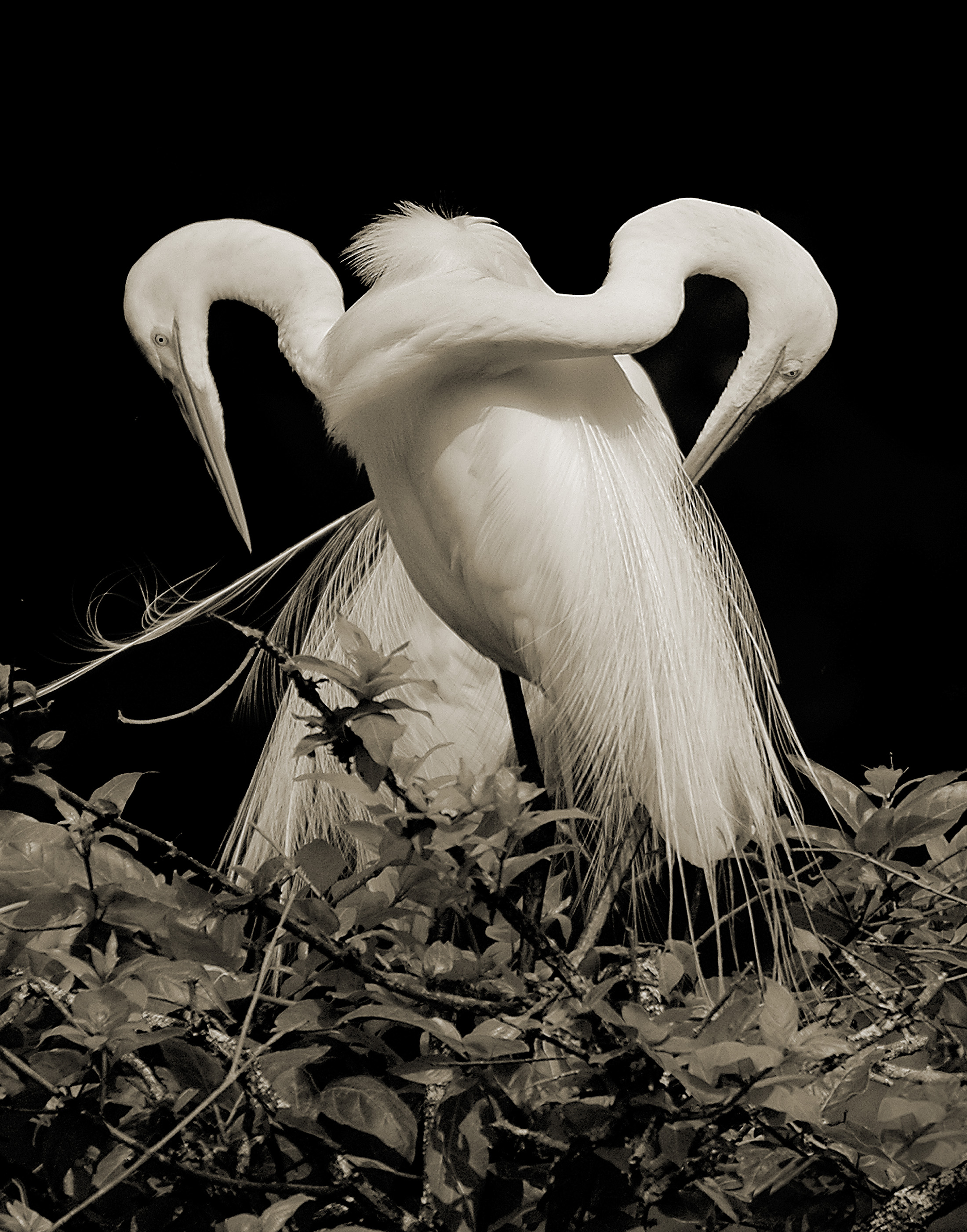Book Details
Fifteen duotone photographs and a letterpress booklet with artist biography and an essay by Richard Lang in a beautifully designed clamshell box.
Size: 12″ x 15″
Edition: Printed in an edition of 30
Photographic Prints: archival pigment prints on Somerset paper, imaged by Conor Collins at Electric Works, San Francisco
Book Design: Marie C. Dern, Jungle Garden Press, Fairfax, CA
Text Printing: printed letterpress by Richard Seibert, Berkeley, CA
Purchase: contact Terry for more information or to purchase
In 1982, driving in Marin County I saw a white bird standing on the shoreline, just off the highway. I pulled over to get a better look. It was a Great Egret; its purity and matchless grace called to me. As I approached, it took flight, spreading its wings like a ballerina in slow motion. I decided then to find a way to experience these birds without harming them. Photography was the perfect tool. For the twenty-five years since that roadside stop, I’ve photographed Great Egrets in Louisiana, Minnesota, Florida and California. I’ve captured them in flight, feeding in shallow water and nesting in rookeries.
One day, while driving in Marin County, California, I saw a white bird standing on the shoreline, just off the highway. I pulled over to get a better look. It was a Great Egret; its purity and matchless grace called to me. As I approached, it took flight, spreading its wings like a ballerina in slow motion. I decided then to find a way to experience these birds without harming them. Photography was the perfect tool. For the twenty-five years since that roadside stop, I’ve photographed Great Egrets in Louisiana, Minnesota, Florida and California. I’ve captured them in flight, feeding in shallow water and nesting in rookeries.
Egret rookeries are usually out of reach of even the longest telephoto lens and it’s an arduous search for the right location. They are very sensitive to the presence of humans and will abandon their nests at the slightest hint of human interference. Sometimes, several seasons will come and go and I’ll get no usable shots. On other occasions, I’ll find just the right location with hundreds of Great Egrets building nests and attracting mates. I set up my tripod, camera and lens and for the next several hours I completely lose myself in the sensuality of their form. I shoot frame after frame from early morning until the end of the day, knowing that the only bad light is when there isn’t enough.
Great Egrets came close to extinction in the beginning of the 20th century due to excessive hunting. Their feathers were in great demand for use in the women’s millinery trade. Populations recovered somewhat after hunting them was outlawed and legal protections were established. But loss of wetland habitats due to coastline overdevelopment has prevented populations from returning to their previous numbers. Pesticides, chemicals and garbage continue to pollute wetlands and reduce the number of successful nesting seasons. In some parts of the United States Great Egrets are a threatened species. I hope my images will encourage preservation of these elegant birds.
